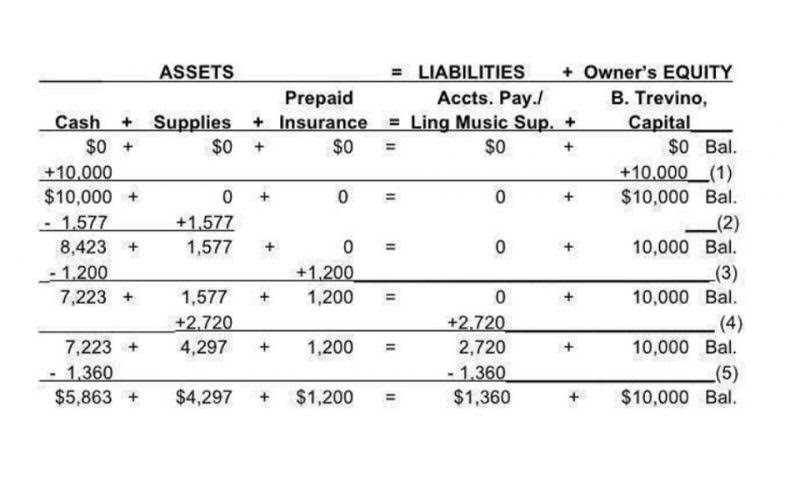
However, they may also be reported separately, in which case, they’ll need to be added together for use in the cash ratio formula. One of the advantages of a quick ratio is that it is fairly easy and straightforward to calculate. The quick ratio calculation is relatively easy to understand, particularly when comparing a company’s liquidity against a target figure of 1.0. Both the quick and current ratios measure your company’s short-term liquidity.
- Another strategy for improving a company’s quick ratio is to reduce its accounts payable.
- The quick ratio compares the short-term assets of a company to its short-term liabilities to determine if the company would have adequate cash to pay off its short-term liabilities.
- Small businesses are prone to unexpected financial hits that can disrupt cash flow.
- It is a straightforward calculation that can be done using the company’s balance sheet.
- By understanding the quick ratio and its significance, investors and analysts can make better decisions when evaluating companies and their financial health.
© Accounting Professor 2023. All rights reserved
A low Current Ratio, on the other hand, could indicate that a company is struggling to meet its short-term obligations. It’s also known as the acid-test ratio and is worth learning—no matter your industry. The quick ratio helps you track your liquidity, which is your ability to pay bills in the short term.

Current Liabilities
In this example, the quick ratio is 0.875, indicating that the company has enough liquid assets to cover 87.5% of its short-term liabilities. We will also cover the differences between quick and current ratios and the limitations and common pitfalls to avoid when interpreting a company’s quick ratio. The quick ratio is calculated by adding cash, cash equivalents, short-term investments, and current receivables together then dividing them by current liabilities. Short-term investments or marketable securities include trading securities and available for sale securities that can easily be converted into cash within the next 90 days.

Limitations of the quick ratio formula
The quick ratio is just one of many financial metrics one can use to evaluate a company’s financial health. One should use it with other financial ratios, such as the current, debt-to-equity, and operating cash flow ratios. Investors use the quick ratio to evaluate a company’s ability to meet its short-term obligations. By comparing a company’s quick ratio to its peers or industry benchmarks, investors can determine whether it has sufficient liquidity to pay its debts and invest in future growth. This company has a liquidity ratio of 5.5, which means that it can pay its current liabilities 5.5 times over using its most liquid assets. A ratio above 1 indicates that a business has enough cash or cash equivalents to cover its short-term financial obligations and sustain its operations.
Quick Ratio Explained: Definition, Formula, and Examples
On the other hand, the quick ratio is a more conservative measure of liquidity that focuses only on a company’s most liquid assets. It is calculated by Online Accounting subtracting inventory from current assets, then dividing by current liabilities. With a quick ratio of over 1.0, XYZ appears to be in a decent position to cover its current liabilities, as its liquid assets are greater than the total of its short-term debt obligations.

Cash, cash equivalents, short-term investments or marketable securities, and current accounts receivable are considered quick assets. The Acid Test Ratio, synonymous with the Quick Ratio, is a critical financial metric used to evaluate a company’s ability to settle short-term obligations without relying how to calculate the quick ratio on the sale of its inventory. It is calculated by dividing a company’s most liquid assets, like cash, marketable securities, and receivables, by its current liabilities. This ratio offers a stringent assessment of a company’s liquidity by focusing exclusively on assets that can be quickly converted into cash. A higher Acid Test Ratio indicates a stronger liquidity position, suggesting the company is well-equipped to meet its immediate financial obligations.
Current liabilities
- In this example, we’ve added a business’s total current assets in one table and totaled the current liabilities in another.
- The quick ratio focuses specifically on a company’s most liquid assets, which are the assets that can be quickly converted into cash without a significant loss in value.
- Additionally, a strong liquidity position can enable a company to take advantage of opportunities for growth and investment, which can ultimately lead to increased profitability.
- The key component of liquid assets that are included in the quick ratio are cash, cash equivalent, marketable securities, and accounts receivable.
This includes accounts like inventory, pre-paid expenses, and accounts receivable. One of them is that the ratio doesn’t give any indication about the future cash flow activity of a company. For instance, a company may be sitting on $2 million today and may not be selling a profitable good.
Investors – Who Uses the Quick Ratio
The current ratio, on the other hand, considers inventory and prepaid expense assets. The cash ratio is a liquidity ratio that reflects a company’s ability to meet its near-term obligations with just cash and cash equivalents. Hence, the quick ratio interpretation would ascertain the short-term liquidity capabilities of Insurance Accounting companies. Calculating the quick ratio is a more conservative assessment of the liquidity status of companies. For example, a quick ratio of 1.8 can be interpreted as a business having $1.8 of liquid assets that are available to pay off each $1 of its current liabilities. A ratio of 1 or more shows your company has enough liquid assets to meet its short-term obligations.

